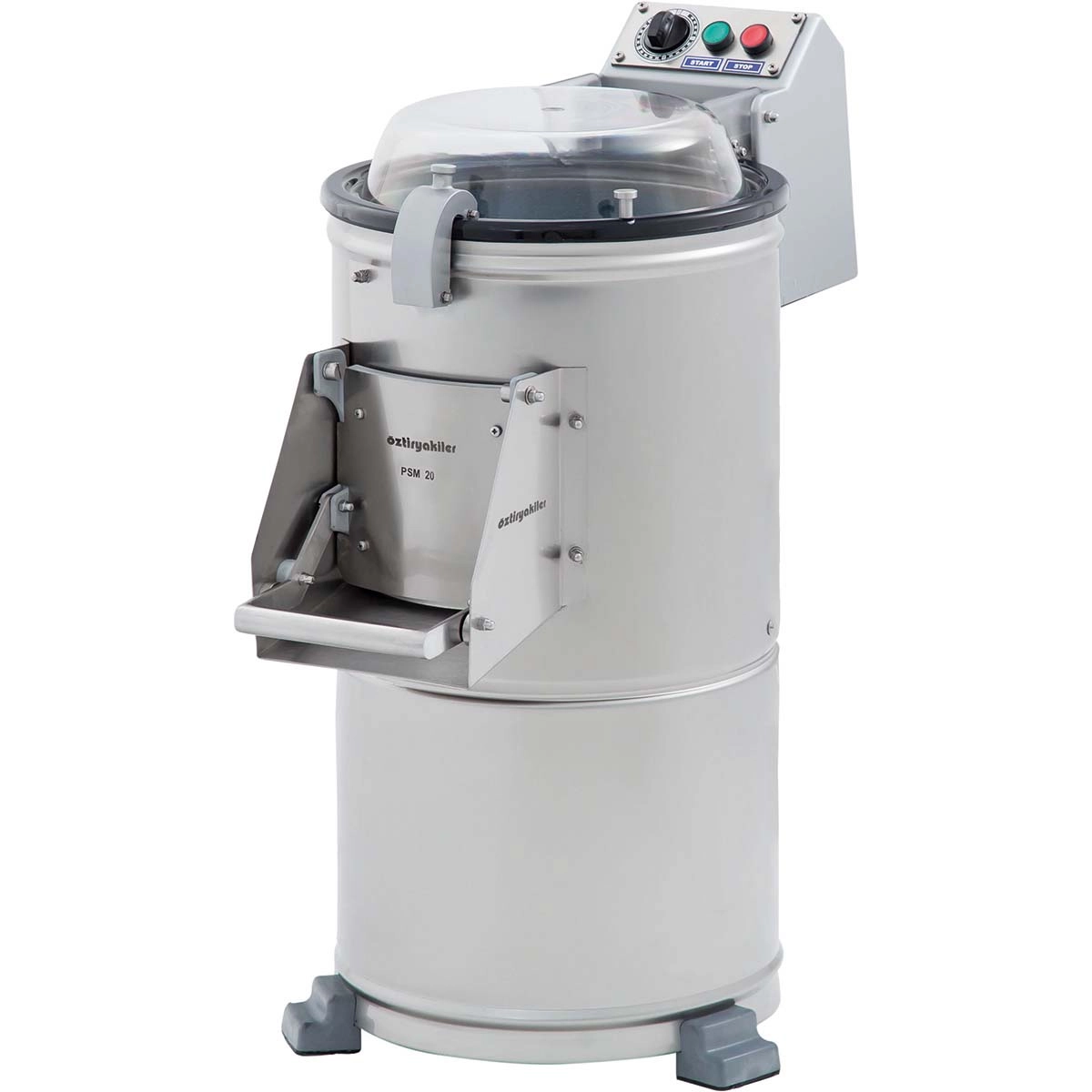
- Home
- Vegetable Cutters & Slicers – Turkey-Built Solutions for Hotels, Restaurants & Catering Kitchens
Food Preparation Units Made in Turkey
Vegetable Cutters & Slicers – Turkey-Built Solutions for Hotels, Restaurants & Catering Kitchens
Why Vegetable Cutters & Slicers Matter in Professional Prep
In a five-star resort in Antalya, the kitchen team struggled to keep up with banquet salad prep. Hand slicing cucumbers and tomatoes slowed service, and garnishes looked uneven. We seen this happen in catering hubs and hotel buffets worldwide. The fix? Commercial vegetable cutters and slicers designed for continuous, high-volume work.
From a consultant or procurement manager’s perspective, cutters and slicers are not just tools—they are time-saving, HACCP-compliant machines that protect budgets and staff safety. Manufactured in Turkey and exported globally, they align with BOQs and tender specifications, making projects smoother for contractors and kitchen designers.
For contractors and project managers, reliable slicers mean no workflow interruptions. Whether it’s 200 salads in a hotel buffet or 1,000 side dishes in a central kitchen, these machines ensure speed, uniformity, and client satisfaction from day one.
1-Year Factory Warranty
Service in 90+ countries
Spare parts in Turkey, UAE
Vegetable Cutter & Slicer Models & Capacities
Model | Hourly Output (kg/hr) | Power (W) | Voltage (V) | Blade/Disc Options | Weight (kg) | Best For |
Compact | 100–150 | 500 | 230 | 5–7 | 20 | Small cafés & restaurants |
Standard | 250–400 | 750 | 230 | 10–15 | 28 | Hotels & mid-size catering kitchens |
Heavy-Duty | 500–700 | 1100 | 380 | 15–20 | 36 | Resorts & central production kitchens |
Installation & Use Case Compatibility
These machines are designed for plug-and-play operation and easy staff adoption.
- Works on single or three-phase power
- Compact footprint for tight prep zones
- Simple controls – training in under 10 minutes
- Fits seamlessly into hotels, resorts, and central kitchens
Durability & Build Quality
Vegetable cutters and slicers are engineered for long service life even in high-pressure kitchens. In a Berlin school kitchen audit, inspectors highlighted that Turkish machines kept their performance consistent across double lunch shifts.
- Reinforced stainless blades maintain sharpness after 1,000+ cycles
- Industrial-grade motors rated for 24/7 continuous shifts
- Non-slip base and strong gear systems for safety
- Average lifespan: 10,000+ hours of use
- Trusted in large hotels, catering hubs, and institutional kitchens
Hygiene & Cleaning
Hygiene is critical in professional kitchens, and these machines are designed for effortless cleaning. In Nairobi catering hubs, audits confirmed that switching to Turkey-built slicers improved hygiene scores by 20% compared to manual prep.
- Stainless AISI 304 build with smooth surfaces
- Removable parts are dishwasher safe
- HACCP-compliant designs, already in use in schools and hospitals
- Daily cleaning routines under 10 minutes
Why Choose Our Turkey-Built Vegetable Cutters & Slicers?
Partnering with a Turkey-based contractor brings efficiency, compliance, and after-sales support.
- Factory-direct supply from Istanbul, exported globally
- Full turnkey contracting: BOQ, MEP, OS&E integration
- CE-certified, HACCP-compliant for global standards
- Two-year warranty with spare parts supplied
- Proven projects across hotels, resorts, catering hubs, institutions

ROI & Cost Savings with Automation
Investing in commercial slicers quickly pays back through labor and waste savings.
- One standard slicer saves 120+ labor hours/month
- Uniform slicing reduces vegetable waste by 8–12%
- Reduced knife accidents and injuries
- ROI achieved in under 12 months for most hotel kitchens
Comparison Guide – Manual vs Automatic Cutting
This table highlights the advantages of commercial slicers over manual labor.
Feature | Manual Cutting | Commercial Slicer |
Labor Hours | 4–5 staff needed | 1 staff for same output |
Consistency | Uneven slices | Uniform every time |
Hygiene | High contamination risk | HACCP-compliant surfaces |
Output | 100 kg/day max | 400–700 kg/hr |
ROI | No ROI | Payback < 1 year |

📊 Case Study – Hotel Buffet Operations
A resort in Dubai struggled with manual slicing for 400 guests daily. The kitchen team needed four staff members working for hours just to keep up with salads and garnishes. Service delays created long buffet queues and guest complaints. Staff fatigue was high, and hygiene audits often flagged risks due to manual handling.
After switching to Turkey-built slicers, the transformation was immediate:
- Prep time cut by 65%, reducing hours of work into a single streamlined shift
- Staff requirements reduced from 4 to 1, freeing up three cooks for other critical tasks
- Guest satisfaction surveys improved by 15%, as buffet presentation looked sharper and service delays disappeared
- Hygiene audits passed easily thanks to HACCP-compliant surfaces and reduced manual handling
- ROI achieved in less than a year, proving the investment sustainable for high-volume hotel operations
🥗 Salad & Garnish Consistency in Buffets
Buffet operations depend on garnish quality and consistency, which slicers deliver easily.
- Consistent cuts improve buffet presentation
- Garnishes uniform across 300+ plates
- Reduced waste and faster plating
- Essential for hotels and fine dining restaurants
Where They Work Best
These machines adapt across foodservice environments worldwide and deliver consistent performance in different scenarios:
- Hotels & Resorts – banquet & buffet prep, 300–600 covers per service
- Restaurants – side dish and garnish consistency for à la carte and high-turnover menus
- Catering & Central Kitchens – large batch slicing for 500–1,000 meals per shift
- Institutions – schools, hospitals, military kitchens where hygiene and speed are critical
- Food Production Facilities – commissaries and factories running continuous shifts
🚢 Export & Logistics – Istanbul Hub
Global delivery is coordinated from Istanbul, with compliance documents prepared for export.
- CE, ISO, SGS-certified machines ready for export
- Managed via Istanbul logistics hub
- Incoterms: FOB, CIF, EXW available
- Customs HS codes & documentation handled
- Two-year international warranty support
Case Study – Institutional Kitchens in Nairobi
In a Nairobi hospital kitchen, manual cutting slowed patient meal service. Staff struggled to prep 250 kg of vegetables daily, and hygiene audits showed frequent issues. After integrating Turkey-built slicers:
- Prep time reduced by 55%
- Staff redeployed from repetitive cutting to patient-focused duties
- Hygiene scores improved by 20% in quarterly audits
- ROI achieved in under 10 months
❓ FAQ – Vegetable Cutters & Slicers
What vegetables can be processed?
These machines handle cucumbers, carrots, potatoes, onions, zucchini, lettuce, and leafy greens. With specialized discs, they can also manage root vegetables for stews, garnishes for buffets, and fine cuts for institutional kitchens.
Are blade changes easy?
Yes. Discs and blades can be swapped in under 1 minute without special tools. This is critical for hotels and central kitchens where menus change frequently during the day. Quick-change systems also reduce downtime and improve workflow efficiency.
How safe are slicers?
Commercial slicers include built-in interlocks, non-slip bases, overload protection, and auto-stop safety systems. Even new staff can operate them safely after a short training session (under 10 minutes). They are fully HACCP-compliant, already approved in European and GCC audits.
Do you align with BOQs?
Yes. We cross-check with consultant BOQs, MEP drawings, and HACCP zoning requirements to ensure compatibility with water, drainage, and power notes (230V/380V). This avoids redesigns and keeps projects on schedule, which procurement managers appreciate.
What’s the warranty coverage?
Every slicer includes a one-year international warranty, with spare parts and discs shipped as part of the export kit. For large institutional projects, extended warranty and on-site training can be included. Warranty covers CE-certified safety compliance and long-term durability.
Real Projects & Testimonials – What Our Partners Say

Food Preparation Units
